 |  |
By Martina
Photos by Christina Escoto
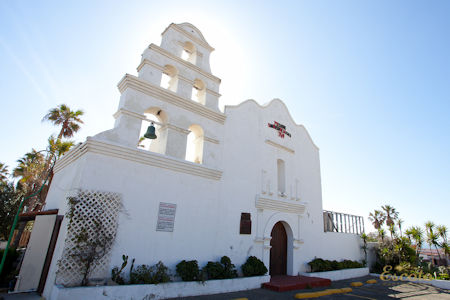
Pirates, Queens and Buried Treasure
Brilliant white sunlight, like a shimmering halo, moves across the surface of the Pacific to the horizon. It is nearly impossible to look directly into its beauty. Except for the wind, there is a deeper quiet than just the absence of visitors to the Calafia’s Historical Monument. From the patio today is seen, a fisherman brazenly pushing his outboard motor to the max, while the bow of the panga cuts the white caps, leaping forward into the rough seas. The panorama is stunning beauty in a historic setting where movies were made, pirates once sailed, a mythical queen ruled and digging for buried treasure still goes on.
The Calafia Point and the cultural historic landmark are rich in history, making this an enjoyable stop on your journey a few minutes south of Rosarito Beach. It is one of the oldest structures along the coast and was at one time a hot spot for locals and tourists alike. It was known for vast garden weddings, layers of hillside terracing for outdoor dining, offering a dazzling view. Children loved to explore the pirate ship, a replica of the Spanish galleon, Corna Aurea. Unfortunately difficult times were experienced in Baja, nearly a decade ago, leading to a down turn in tourism and the noticeable aging of this historic site. Yet, on a quiet day, you can feel an ancient quality that still permeates the silent corridors.
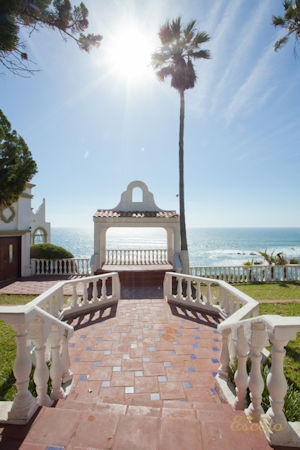
The earliest recorded history of this area was made by the Spanish galleons in the 1500s. But well over 10,000 years ago, the first people lived here. The Kumiai and other indigenous groups roamed freely as hunter-gatherers and seasonally came to the coast. They were “healthy and robust” and they lived on through 600 generations into the present day. “It was one of the most culturally and linguistically diverse areas in pre-Columbian North American. After contact with Spanish explorers, the first people were “decimated by European diseases.”
The outside architecture is reminiscent of the old Mission San Diego de Alcalá now in the US state of California. Moving on deeper into the building there are glass cases displaying a small collection of earlier times. A Portuguese explorer sailing under the Spanish flag found a safe harbor on September 17, 1542. Juan Rodríguez Cabrillo named the area San Mateo, today it is now known as Ensenada. At that time, Spain believed they would find a fabled island of gold. Spanish galleons visited the Baja Pacific coastline in hopes of discovery. At first landing they thought that they had found the fabled island that burned hopefully in the minds of the mariners. But in reality the idea came from a book, The Adventures of Esplandian, written by Garci Rodiguez de Montalvo in the 1500s. It was said there was a queen who ruled over a kingdom, the mythical Island of California. Most believe today that this is the origins of California’s naming. This island was populated only by women, “beautiful black Amazon warriors using gold tools and ruled by Queen Calafia. These women were, “courageous, strong of limb and large in person, full in the bloom of womanhood….” Queen Calafia “commanded a fleet of ships with which she ruled and maintained peace…” It was written that the queen was so powerful she could “project her imperial power….at will.” How disappointed the lusty mariners must have been to find that their dream of beautiful women carrying gold was an illusion.
Wandering further through the darken hallways, it is remembered that history still holds more unique intrigue. There is a very old Spanish rumor that a treasure was buried near here by English pirates, “possibly by rebellious crew members from the Thomas Cavendish expedition. It is known that Cavendish captured the Spanish treasure galleon, Santa Ana, off the coast of Baja California, and it is known that he had sailed north with his small pirate fleet.” This is not the only story that has caught attention, 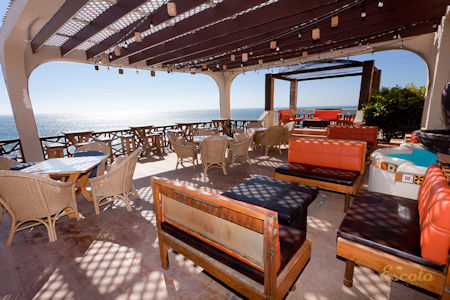 creating fervor and dreams of riches. A San Francisco nautical historian and archaeologist, “has a sea story to tell - of disease and death and the shipwreck of a Spanish galleon full of the treasures of Asia. The ship is said to be the San Felipe and it sailed from Manila in July, 1576. It is one of the oldest known shipwrecks on the Pacific coast of North America. Von der Porten has organized several expeditions to the wreck site and won't say where it is. Can’t blame him. He said, "I can tell you only that it is south of Tijuana and north of Cabo San Lucas.” Lifelong residents of this area, smile knowingly and wave a hand out to the sea just south of Point Calafia.
creating fervor and dreams of riches. A San Francisco nautical historian and archaeologist, “has a sea story to tell - of disease and death and the shipwreck of a Spanish galleon full of the treasures of Asia. The ship is said to be the San Felipe and it sailed from Manila in July, 1576. It is one of the oldest known shipwrecks on the Pacific coast of North America. Von der Porten has organized several expeditions to the wreck site and won't say where it is. Can’t blame him. He said, "I can tell you only that it is south of Tijuana and north of Cabo San Lucas.” Lifelong residents of this area, smile knowingly and wave a hand out to the sea just south of Point Calafia.
Stepping into the more recent history, pictures adorn the walls from one of the most famous movies ever made, the Titanic. An actual part of the wall from those scenes is incorporated in an area near the entrance to the lovely Titanic Salon. Under glass there is a copy of the original menu that the gallant passengers of 1912 would have enjoyed. It does offer an odd selection, such as roasted bone marrow, apparently considered a delicacy back then. Other tantalizing choices of grilled mutton chops, ham pie and corned ox tongue were served on the finest Lenox china. Most people know that James Cameron used the Baja Fox Studio’s huge water tank for many of the shots during the sinking of the ship. You have to look close to find our own Graham Mackintosh playing a drunken Irishman. He did a fine job, possibly drawing on a past escapade when walking the Baja Peninsula with his burrow. What many people don’t know is the Calafia’s Titanic Salon was used as a set in the film. It was a fun time during the mid 90s when locals were on the lookout for the movie stars in town. Today the Titanic Salon is very lovely with a breathtaking southerly view of the coastline. White linen covers the chairs while the table linen is off set in mauve. The table is set with bone china. Calafia Salon is only open on weekends during the winter months. Calling ahead for reservations is a good idea.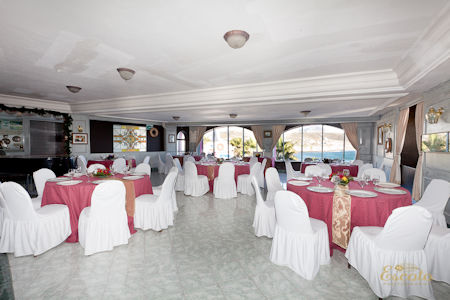
Opened during the week from noon on is a bistro-like restaurant called Silvestre. It also has a vast view of the sea. Late afternoon sunshine blazes through the wall of windows, while soft jazz plays in the background. There is a limited menu which will give you an opportunity to sample the roasted bone marrow, if you are courageous and not traveling with your vegetarian friends. However, there are several savory choices they will love; a creamed roasted garlic soup and the roasted vegetable salad are delicious. Sitting outside on the patio overlook, sipping a mellow Baja California wine, remembering all the people who were here before, brings your visit to an end, but the memories are sure to linger on.
The son of the original owner is taking on the massive job of restoration and hotel room remolding. It is a task that will take some time, but certainly needed in order to save this historic landmark. If you are interested in staying in the hotel, it is suggested to ask to see a room before registering.
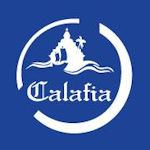
Contact:
Km 35.5
Contact from the US: 011-52-661-613-2308
References
The Archaeology of Manila Galleons by Roberto Junco
Wikipedia
Africaresource.com
American Indian Holocaust and survival: a Population History Since 1492 by Russell Thornton
Baja California Spanish Language School
Into a Desert Place by Graham Mackintosh
Martina's email: mteomaya(at)gmail.com

Excellent

fast replies and great price!

Baja Bound is the easiest way to set up coverage before you head into Baja. Online, 5-mins, you're...